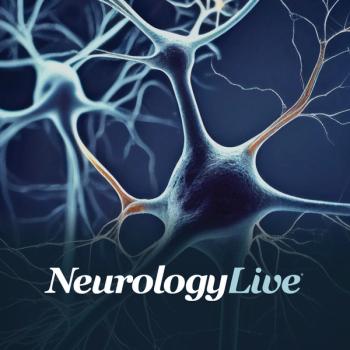
SYMBYX Neuro Light Therapy Wellness Helmet Positively Impacts Parkinson Disease Symptoms
Over a 12-week treatment period, patients with Parkinson disease on light therapy demonstrated statistically significant improvements of 58% and 40% in lower and upper limb coordination and movement.
Newly announced findings from a triple-blinded, randomized controlled trial showed that treatment with SYMBYX Neuro infrared light therapy helmet significantly improved symptoms of Parkinson disease (PD) in areas of facial expression, upper and lower limb coordination and movement, walking gait, and tremor.
Currently under review by a peer reviewed journal, study responders demonstrated moderate to strong positive response to treatment over a 12-week period. Using the standardized Movement Disorder Society Unified Parkinson’s Disease Rating Scale-III (UPDRS-III), compared with the placebo group, those on the light therapy improved 24% to 58% over baseline across all 5 areas tested, unlike the placebo group, which demonstrated statistically valid improvement in lower limb coordination and movement only.
Wayne Markman, chief executive, SYMBYX, said in a statement, "The San trial is the first of its kind in the world with a control group. COVID made data collection significantly more challenging but the scientists did a fantastic job. This research confirms that transcranial light therapy is an effective complementary therapy for reducing Parkinson's symptoms."
The study featured 40 individuals with PD who were split into either active treatment or placebo infrared helmet therapy. After the 12-week treatment period and subsequent 4-week washout, those on placebo then received active treatment. In total, across the study, 70% of participants on active treatment and 55% of those on placebo were identified as medium to strong responders.
By treating the gut with laser light, SYMBYX is geared to manipulate a person’s microbiome to reduce inflammation, prevent bacterial leakage, and increase dopamine production in both the peripheral and central nervous system, thus leading to improved brain and nervous system function. SYMBYX Neuro automatically treats for 24 minutes, first with a 12-minute cycle of red-light therapy at 635 nm followed by a 12-minute cycle of infrared ights at 810 nm. It is pulsed at 40 Hz, which is an equivalent frequency to gamma brainwaves.
Markman added, "This San trial of the new SYMBYX Neuro light therapy helmet is critical research in Parkinson's. PD has historically been an intractable, neurodegenerative condition that typically declines with no improvements possible, whereas the SYMBYX Neuro users showed improvement across all measures. Importantly, light therapy does not interfere with other Parkinson's treatments, including medications. And the best results are always achieved in conjunction with a healthy diet, regular exercise, a realistic approach to treatment and support from qualified practitioners and caring friends or family members."
In terms of specific domains, those on light therapy showed 27% and 24% improvement over baseline in facial expressions and tremor, respectively. Gait, which included stride amplitude, stride speed, height of foot lift, heel strike, turning, arm swing, and freezing, was improved by 28% through SYMBYX Neuro. Additionally, active-treated patients saw a 40% improvement in upper limb movement and 58% improvement in lower limb movement. Similarly, the placebo group showed a 58% improvement in lower limb movement as well.
Lead investigator Geoffrey Herkes, PhD, MBBS, FRACP, director of research, Sydney Adventist Hospital, said in a statement "There is clearly a placebo effect from using light therapy on some patients, but not on all. Furthermore, one would expect the positive effect of using a sham helmet to diminish over time. We look forward to reporting on more data from this trial in the coming months. If you consider the sub-category results, however, then the positive benefits of active helmet light therapy become clearer."
REFERENCES
1. SYMBYX announces promising Sydney Adventist Hospital clinical trial results for Parkinson’s using the SYMBYX Neuro – a new light therapy wellness helmet. SYMBYX Biome. News release. March 17, 2023. Accessed March 23, 2023. https://www.prnewswire.com/news-releases/symbyx-announces-promising-sydney-adventist-hospital-clinical-trial-results-for-parkinsons-using-the-symbyx-neuro--a-new-light-therapy-wellness-helmet-301774947.html
2. Pioneering Light Therapies to Improve Chronic Conditions. SYMBYX Biome. https://symbyxbiome.com/en-us. Accessed March 23, 2023.
Newsletter
Keep your finger on the pulse of neurology—subscribe to NeurologyLive for expert interviews, new data, and breakthrough treatment updates.


































